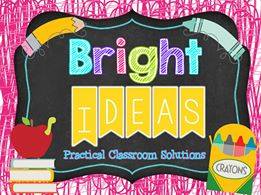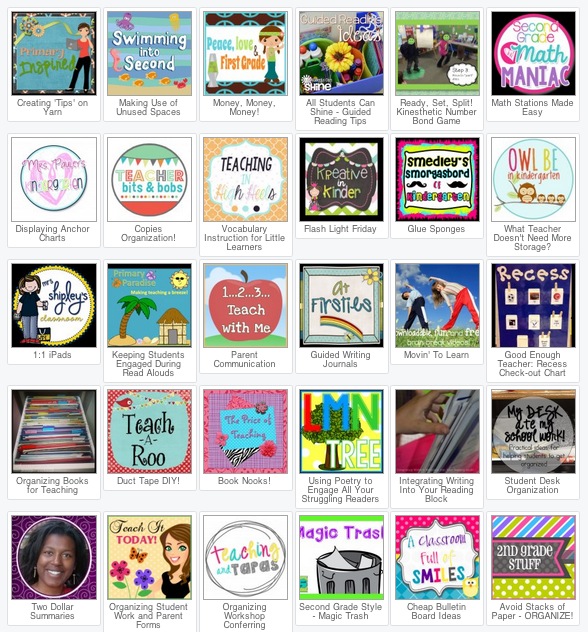
Every teacher has fallen into the trap of repeating directions we’ve given a million times. Kids already know what they should be doing, so they tune us out. We say it again, they ignore it again. And we go home at the end of the day exhausted because we’ve spent our time trying to control kids’ behavior instead of equipping them to exercise self-control.
One of the simplest tricks I’ve learned for breaking this cycle is to give students the responsibility for solving the problem. I try to ask questions that require the child to think about what she or he is doing and determine a more appropriate behavior:

What should you be doing right now? is my absolute favorite and it works in just about any situation. Usually when I ask these types of questions, students will pause, think, and then self-correct without any problems. It works well because I haven’t given a command for kids to rebel against: they haven’t had to give in because they were never told what to do. Students determine the solution and choose a different behavior, and instead of wearing us both down with more nagging, I get to say something positive and encouraging:
Exactly. Thank you for fixing that. Good choice. I knew you would figure out the right thing to do. You got it. Yes.
Of course, not all questions inspire self-reliance and problem solving. Many times we ask “why” questions that are really commands in disguise. I can’t count the number of times I’ve asked students, Why do I hear talking? when I really mean Stop that right now! In those moments, I’ve already decided there’s no good reason for anyone to be talking, so I don’t really want to hear what’s causing it or get into a debate with the kids about whether the talking is justified. So, I try to replace those unproductive “why” questions with questions that inspire constructive responses from students and help them think about their behavioral choices:

I hope you find these tips helpful with your own students! I’d love to hear how you break the nagging cycle in your classroom, or if you’ve discovered other questioning techniques that help students reflect on their choices. Please share in the comments below.

I’m excited to pass on a ton of other great tips for you today: this post is part of a new monthly blog hop called Bright Ideas. Nearly 200 educators have created blog posts that are completely free of products, freebies, or downloads of any kind. In this series, we’re sharing only the “bright ideas” that have worked in our classrooms.
The blog hop is divided into grades K-2 and grades 3 and up, though many of the ideas (like the one I’ve shared) work for any grade level. Next up on the grades 3 and up blog hop is Christina Marie from Apples, Books, and Crayons. She’s sharing her ideas for student desk organization. If you don’t want to go in order and click through all the posts, you can search by topic using the link-ups below and skip to any other blog in the hop. Enjoy!

Angela Watson
Founder and Writer
Sign up to get new Truth for Teachers articles in your inbox
Discussion
OR

Join our
community
of educators
If you are a teacher who is interested in contributing to the Truth for Teachers website, please click here for more information.


















What a great reminder! I love the strategy of letting students do the thinking and problem solving instead of my trying to control everyone else! Wonderful question tables! Thanks for sharing!
This could not have come at a better time!! Thanks for the reminder! Going to print out these prompts and put them on my desk!
Great post! My favorite prompt is “What’s wrong with this picture?” (Usually used when students haven’t picked up something.) The kids always giggle, and know right away what needs to be fixed. Of course, it’s always followed by a “I knew you could figure it out!” or “Thank you!” Thanks for the bright idea!
Sally from Elementary Matters
I love that one, Sally! I can imagine saying that with a playful smile, too, so it’s almost like a game figure out what’s “off.”
It is amazing what a simple rephrase can do to help a situation! Such a wonderful idea to share!
What do you suggest when a student gives a wise guy response to these questions, especially when the classmates think it’s very funny? Seems to happen to me every time and I’m so frustrated. It’s not like this is the only strategy I’ve tried, but when I do say it this way I keep getting the garbage.
Great question! I would give “the look” to wordlessly let the student know the answer is unacceptable and that I expect them to self-correct. If that doesn’t work, I’d probably point to wherever they’re supposed to be or give another non-verbal prompt if I could. If that’s not possible, I’d just say in a more disappointed than angry tone, “You know the right answer to that” and tell them what they’re supposed to be doing if needed.
If you have a couple of kids that always give you rude or sarcastic replies when you try to redirect behavior with questions, then by all means, use a different technique with them! Some students respond better to short and simple (non-emotional) directives, and that’s absolutely fine. However, if most of your class doesn’t respond to questions OR directives, then there are probably some root causes that need to be dealt with.
I have used this strategy for several years, but have been told to not be so obtuse and be more direct, that I was being disrespectful. I had thought I was doing well to use the, “What should you be doing right now?” approach. Was that person just off base and it really is a good strategy? It have to say it did seem to work…
Hmm, I guess whether the question comes off as disrespectful depends a lot on your tone. The question has to be a genuine one, not sarcastic in any way, or even rhetorical. I also find that following up afterward with positive reinforcement (yes, good job, that’s it, etc.) make it clear that you were being constructive and not critical toward the child.
I don’t see questioning as being obtuse in any way, assuming you’ve already taught the expectation to the child. I wouldn’t ask a kid what he’s supposed to be doing if I hadn’t already explained it, modeled it, practiced it, etc. first. But there comes a time when the child knows what to do and is simply off-task…a question should be fine to help them be redirected.
Ultimately, my advice is to do what works for your kids. If you have found questioning to be successful in redirecting behavior, I think you should stick with it!
Thanks. I didn’t think I was sounding sarcastic, but anyway, I am glad to know that other people think this is a valid and effective tool to redirect, and I think I’ll just keep using it! And of course watch my tone along the way. Again, thanks. It’s easy to second guess oneself to death!